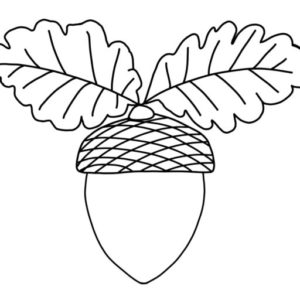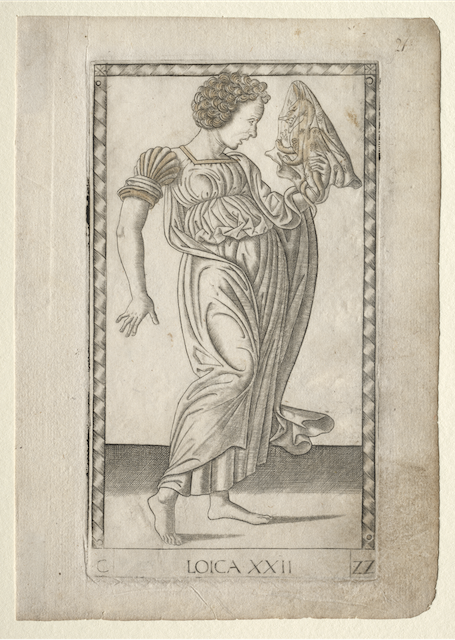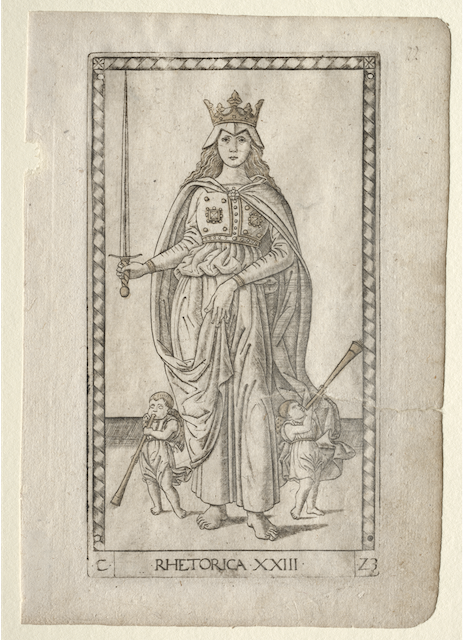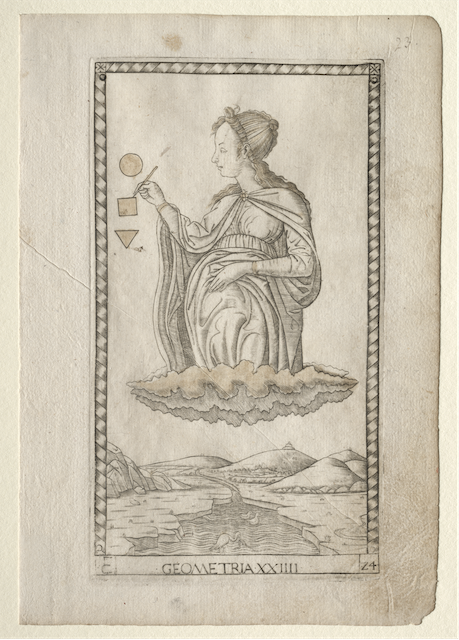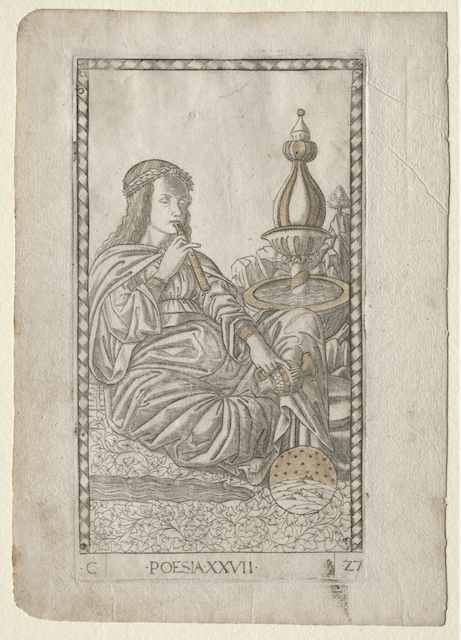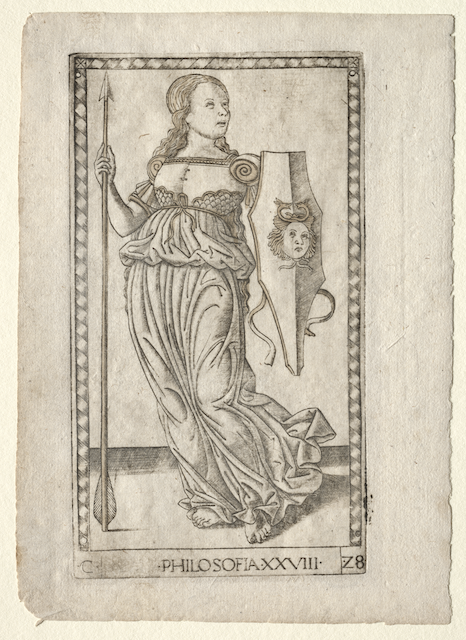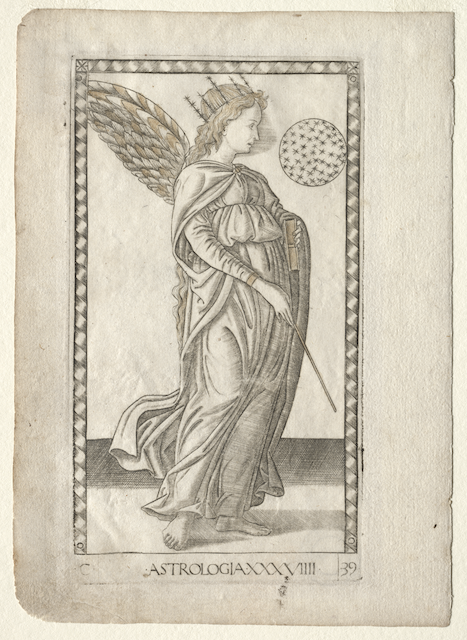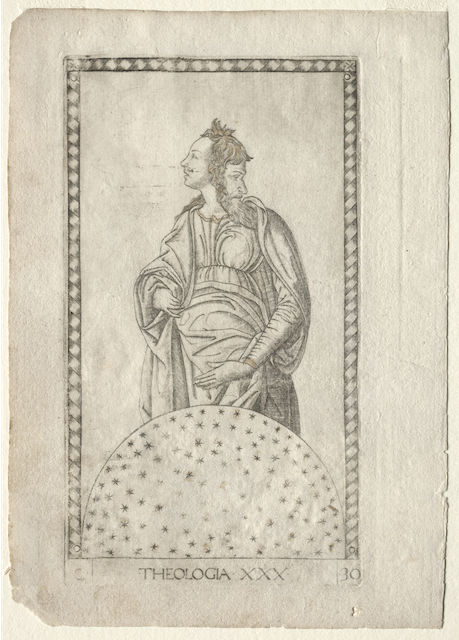Comparison with the Mantegna Tarocchi:
To establish a hierarchical division and importance placed on the panels on Pollaiuolo’s Tomb of Sixtus IV, a comparison must be made to an earlier series known as the Mantegna Tarocchi (figures 48-57) This series was likely produced in the Northern Region of Italy in Ferrara and in the early 15th century, and despite the name, it was unlikely produced by Mantegna himself.[131] This series of didactic cards more closely adhered to the traditional iconographic associations of the respective disciplines.[132] With fifty cards in total, it served as a didactic game as each series of ten cards was structured in a hierarchical order, each card having a number placing it within the overall hierarchy. The series of cards were widely dispersed throughout Italy as it provided a visual equivalent to the texts, thus educating young intellectuals on the order of the world and the Liberal Arts.[133] Within the Tarocchi series, as the Cleveland Museum of Art describes them, there was an understanding that “the universe was a ladder-like structure that began with the beggar and rose through the ranks of humankind, the muses, the liberal arts, the virtues, and the planets until it finally reached the pinnacle, the dwelling place of God.”[134] This structure is visually represented within the cards, as each level corresponds to a section within the series. Each set of ten cards detailed the Human Condition, Apollo and the Muses, the Sciences and the Arts, Ethical Principles followed by the Cosmic Principles, and finally, the Planets and the Stars. As I will show, the series most relevant to Pollaiuolo’s tomb is the series of the Sciences and the Liberal Arts, aiding in my argument that a hierarchal division exists among the sculptural reliefs of each discipline.
In the Tarocchi series, the traditional seven Liberal Arts are depicted with additions of Poetry, Philosophy, and Theology. The order is as follows: Grammar, Logic, Rhetoric, Geometry, Arithmetic, Music, Poetry, Philosophy, Astrology, and Theology. This series of cards set an important hierarchical base for the public and learned scholars to understand the divisions between the disciplines. The figures in this series correspond iconographically to the descriptions in Martianus Capella’s writing and reflect the style of representation of the Liberal Arts that closely relates to how they were depicted in the Middle Ages. However, we can identify certain similarities between this series and the disciplines represented in Pollaiuolo’s tomb as related to the hierarchical divisions between the disciplines.
Within the Tarocchi series, the arts of the Trivium have lower numbers showing they are at the beginning and reflecting the fact that they serve as the basis for further study. Without understanding Grammar, Logic or Dialectic, and Rhetoric, scholars would be unable to progress any further in their studies. Visually, this can be identified in the position of the disciplines at the bottom of the Sixtus’s tomb near the feet of the pope. Alison Wright argued that in the figures of
Figures 48-57. Master of the E Series, Mantegna Tarocchi, Series C: 21-30, c. 15th century, Engraving
Images of Grammar, Logic, Rhetoric, Geometry, Arithmetic, Music, Poetry, Philosophy, Astrology, Theology.
the Virtues, there is a hierarchy established as those closer to the pope’s head are equated with higher importance and moral virtue.[135] Therefore, Theology and Philosophy at the top can also be equated with the higher echelons of learning while Grammar, Logic, and Rhetoric being placed near the feet communicates their lower level of importance among the disciplines. As Pollaiuolo takes the earlier example of the Mantegna Tarocchi he adapts these hierarchal divisions between the Liberal Arts, continuing the lower positioning of the arts of the Trivium.
However, the variation occurs within the arts of the Trivium with Theology and Philosophy. In the Tarocchi series, following the arts of the Trivium, Geometry is the lowest, followed by Arithmetic, Music, Poetry, Philosophy, Astrology, and finally Theology. As Geometry and Arithmetic are closer to the top, they are paired together. Following Wright’s argument that hierarchy is established along moral lines with those of more importance at the head, then we can recognize the importance of these disciplines within the overall scheme and layout of the tomb.
While the Mantegna Tarocchi series incorporates the discipline of Poetry, it is notably missing from the tomb. Instead, Pollaiuolo used poetic ideals and incorporated them into each discipline. As the discipline of poetry was widespread and popular from the writings of Dante to Petrarch and Boccaccio, it is interesting that Pollaiuolo did not use it to complete the ten panels on the sides. However, instead of including the singular discipline of Poetry, Pollaiuolo incorporates the discipline into all the other panels through notions of poetic beauty and the ornamented female body. These panels illustrate the idealized, perfect female body, ornamented with objects of their study, and accentuated by the folds of their all’antica style and chiton dress. Although echoing the dress of the virtues above, the Liberal Arts exemplify the female body, using their body and ornamentation to evoke the poetic writings that were so prominent.
